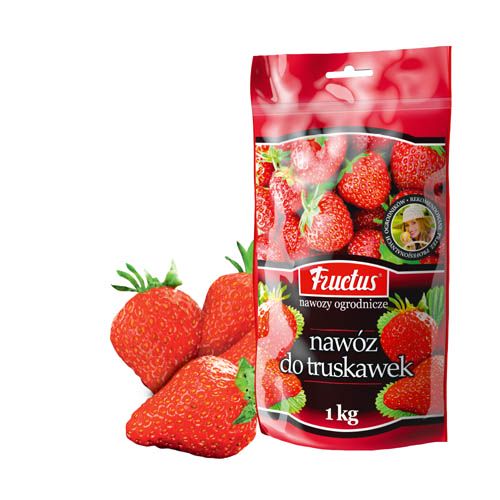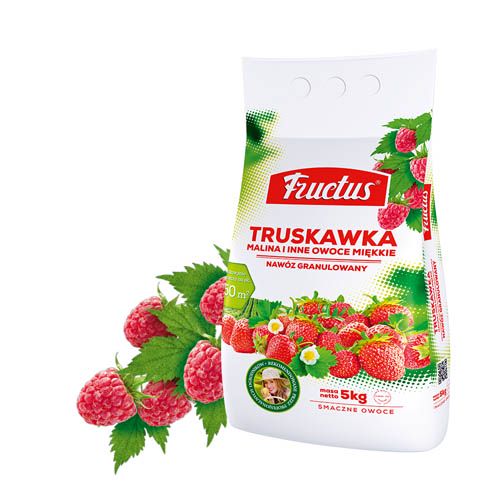Advice
Growing strawberries
Cultivation of strawberries is very popular both in allotments (in the ground) as well as on domestic patios and balconies (e.g. in containers, pots). When deciding on the cultivation of strawberries, it should be kept in mind that to get beautiful shapely and tasty fruit, the plant should be supplied with the properly balanced and selected nutrients. For this aim, we need to apply the appropriate fertilization.
more
SELECTION OF THE VARIETY
The selection of the variety of strawberries should be based on its characteristics (preferred climatic conditions, soil requirements, resistance to diseases, purpose of the variety, for example, dessert variety, industrial or versatile, yield potential). To avoid unpleasant surprises, it’s best to purchase seedlings coming from a verified source i.e. from manufacturers with the adequate practical experience in this field and appropriate certificates.
SELECTION OF THE POSITION
Strawberries should be grown on soils with high culture, architecture, with a large water content and correspondingly high humus content. The best results of production are achieved on medium-textured soils. On heavy soils, catchment soils and also on very light ones plant growth and development and, thus, the plant yield are significantly reduced. A strawberry plantation should not be set up in depressions or on heavily inclined slopes – in the first case because of the formation of so-called frost hollows, in the second – because of the possibility of scouring the plants in the case of a heavy rain. The soil for growing strawberries should have the pH reaction regulated. The optimum pH for most cultivars is in the range of pH 5-6. The best preceding crops, however, are cruciferous plants (oilseed rape, mustard, brassicas), legumes (peas, beans, field beans, lupine, vetch, alfalfa, etc.), cereals are acceptable preceding crops.
SOIL PREPARATION
Prior to founding a plantation we must overcome troublesome weeds (couch grass, thistle, orach, bindweed), preferably with the use of chemicals. Fertilization with manure at doses up to 0.4 t / 100 m2 should be performed in autumn. Before planting, the soil should be freed of weeds and have adequate mellowness.
WHEN TO SET UP A PLANTATION?
The optimum time to set up a plantation is summer, provided, however, that we have well rooted seedlings and the course of the weather (rainfall) is favorable. Planting within this time limit will allow us to obtain satisfactory yields in the next calendar year, i.e. the first year of plantation. In practice, also planting in the spring time is feasible – this time limit is beneficial as well, because plants are provided with favorable conditions for growth (reserves of moisture in the soil), they take root well and strongly grow after planting. By far the least favorable time for planting is autumn and this is due to the risk of poor rooting of seedlings and their freezing in winter and early spring.
MINERAL FERTILIZATION
An especially recommended fertilizer for growing strawberries in the ground is Fructus Strawberry. Prior to founding a strawberry plantation, in the conditions of medium content of phosphorus and potassium in the soil, this fertilizer can be applied at the recommended dose of 5-7 kg / 100 m2. The fertilizer should be mixed with the soil to a depth of approx. 15 cm. On fruiting plantations it is recommended to apply the fertilizer in two doses: – the first, in an amount of 3-4 kg / 100 m2, used in early spring, together with moving the vegetation; – the second, in an amount of 2-3 kg / 100 m2, applied after the fruit harvest, till the end of August. The fertilizer should be spread evenly over the entire surface of the field. In the case of top dressing fertilizer, spread it when the plants are dry. If the content of available phosphorus and potassium in the soil is high, the dose can be reduced by approx. 15-20%.
CARE
When taking care of strawberries, priority is to prevent the infestation of the plantation, which is why we apply the row-crop cultivation using a hoe and in the case of small plantations – hand tools. Thus, in addition to the destruction of weeds, we obtain the effect of loosening of the top layer of soil, which prevents loss of moisture. For the control of monocotyledonous weeds such as chaff, grain broom, volunteer cereals, various kinds of grass etc., selective herbicides should be applied. An important element of the plantation protection is fighting diseases (mainly powdery mildew and botrytis attacking fruit) and pests (raspberry beetle) – in this case, it will be necessary to apply the appropriate chemical preparations. Their wide selection can be found in every major wholesaler of plant protection products. You should definitely follow the instructions of use of the preparations referred to above, especially referring to the grace periods and prevention. Effective phytosanitary treatment limiting the occurrence of diseases and pests is also mowing (post-harvesting of fruit) of leaves and removing them from the area of the plantation. In dry years, with little rainfall, it is advisable to irrigate the plantation. In the case of commercial plantations it is done mostly through irrigation or drip irrigation using special installations. On amateur plantations with a small area a watering can will be an effective tool or just watering of the plants directly from a garden hose is efficient enough.
In order to obtain pure fruit uncontaminated with soil residues, it is worth to use mulching. For this purpose the best suited are rye or wheat straws (straw must be clean – not infested with mold and free of residual weed seeds). Mulching is best done by the end of April, by inserting straw under the plants. We will obtain similar effects by planting the plants on black film or agro-textile.
FOR CULTIVATION OF STRAWBERRIES AND RASPBERRIES WE RECOMMENDATION:
Fructus STRAWBERRY, RASPBERRY AND OTHER SOFT FRUIT
- Fructus Nawóz do borówek (Fructus fertilizer for blueberries) – granules
- Fructus Nawóz do truskawek (Fructus fertilizer for strawberries) – granules
- Fructus TRUSKAWKA, MALINA I INNE OWOCE MIĘKKIE (Fructus STRAWBERRY, RASPBERRY AND OTHER SOFT FRUIT) – granules
- Fructus OGRODNIK (Fructus GARDENER) – granules
- Fructus Nawóz jesienny (Fructus Autumn fertilizer) – granules
- Fructus JESIENNY (AUTUMN Fructus) – granules
- Fructus do truskawek, poziomek i malin (Fructus strawberries, fragaria strawberries and raspberries) – crystalline
- Fructus Plantator (Fructus Planter) – liquid





